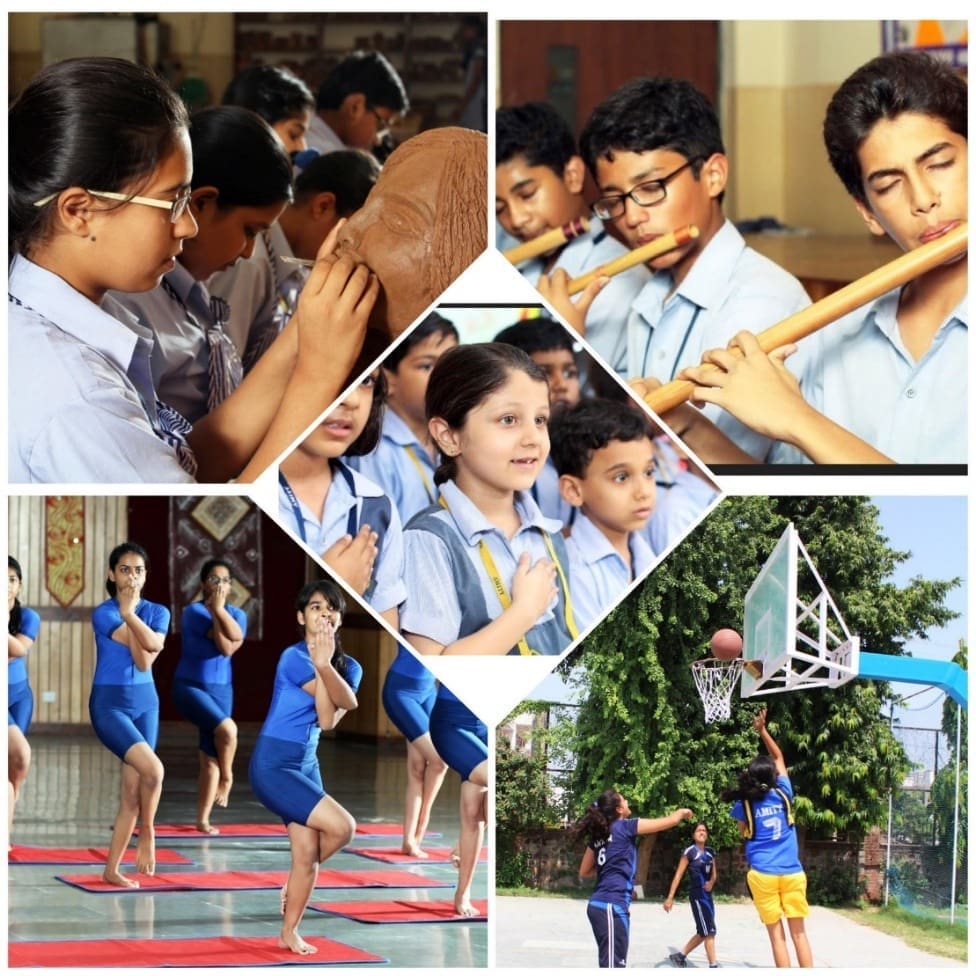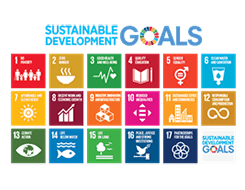
By Arti Chopra
Principal, Amity International School
Health is a state of body. Wellness is a state of being- Stanford
Preparing young people for the rigors of adulthood is certainly a challenge for the schools today. The three R’s- Reading, Writing or Arithmetic, left to themselves are no longer able to meet the needs of 21st century learner, without the support of four C’s, namely, critical thinking, creativity, collaboration & creativity.
The schools of today are battling with a series of challenges in the classrooms, ranging from indiscipline or bullying issues, lack of student motivation or drive, irregularity, missing parental support, over obsession with tech-gadgets, moving on to depression & suicidal tendencies etc. Not only this, but also that the contemporary workplace increasingly requires flexibility, creativity, social intelligence and other soft skills and as schools prepare students for life, these components cannot be overlooked.
So, though the expectations from schools in terms of giving guidance on many fronts have increased, yet the average time spent by a child in school remains the same. There is an emerging need for schools to incorporate pursuit of health, personal growth, and improved quality of life in the curriculum and teach students how on live a balanced life.
A healthy lifestyle is the bedrock for all other success. When our kids are healthy, they achieve- By Kevin Corrinet
To achieve balance, students need to be taught to care for their mind, body, and spirit. If any of these three areas is consistently lacking or forgotten about, we will not be at our optimal level of health.
Well-being itself can be understood as a sustainable state of positive mood and attitude, resilience and satisfaction with self, relationships and experiences at school. Rather physical, social, emotional, moral, spiritual and aesthetic development are an integral component of any student’s general ‘well-being.’
Each day at school begins with attempts to work toward maximizing our level of health and wellness to churn out good results and live long, full, and healthy lives. The pursuit of a healthy childhood, happier adulthood, and improved quality of life relies on living a balanced life. If we take responsibility for our own health and well-being, we can improve our health on a daily basis. If the students could take care of certain factors that influence our state of wellness, including nutrition, physical activity, stress-coping methods, good relationships, and career orientation, their success rate in life would be higher.
Universal access to early childhood education and care and school education is an important foundation for learning and health and wellbeing. In keeping with the WHO definition of health, the so-called “determinants of population health” can be viewed as assets for wellness. By assets we mean that possession of certain characteristics results in greater likelihood of a higher level of wellness. They do not “determine” wellness, but rather provide an increased potential for wellness.
In order to ‘shift the curve’ and narrow the gap in children’s health and developmental outcomes, a population approach to service provision is required. By focusing efforts on the whole community or population, the population curve is shifted to the right. This ensures a greater number of people benefit from improved health and well-being and there is an increase in the number of children falling into the average or above average range of health and well-being outcomes (as shown in the figure)

Physical Education is an integral component of education in schools today. Sports and games form an integral part of curriculum as it is essential to lay foundation of a sound mind in a sound body. The International Charter of Physical Education and Sport, UNESCO, 1978 states that “Every human being has a fundamental right of access to physical education and sport, which are essential for the full development of his personality.” The National Sports Policy, 1984 was the first move towards developing a conducive policy framework for the development and promotion of sports in our country.
Since then a lot of emphasis has been laid on making sports integral part of curriculum. But there are some schools who do not properly encourage students to participate in sporting events and parents add to the physical hindrance by not believing that this field can bring as much or even better chances of success than the academic field as far as inculcating interest for sports or maintaining good health is concerned, the school managements provide adequate support. Once the student gets identified as a national achiever, for his advanced training needs and infrastructural requirement, the state needs to step in, in terms of provision of high quality development of effective, physical training instructors.
Those of us who participate in regular physical activity do so partly to improve the current and future level of our health. We strive toward an optimal state of well-being. As our lifestyle improves, our health also improves and we experience less disease and sickness. When most people are asked what it means to be healthy, they normally respond with the four components of fitness mentioned earlier (cardio respiratory ability, muscular ability, flexibility, and body composition). Although these components are a critical part of being healthy, they are not the only contributing factors.
The Scientists say, one should accumulate 60 minutes of physical activity every day to stay healthy or improve health. There are few things one can do that have a more profound effect on more bodily systems than exercise.
The recommendations are as follows:
Endurance-On 4 to 7 days a week, perform continuous activity for your heart, lungs, and circulatory system. Time required for improvements depends on effort.
Flexibility-On 4 to 7 days a week, perform gentle reaching, bending, and stretching to keep muscles relaxed and joints mobile.
Strength-On 2 to 4 days a week, perform resistance exercise to strengthen muscles and bones and improve posture.
Physical health includes the ability to maintain a healthy quality of life that allows us to get through our daily activities without undue fatigue or physical stress Physical wellness incorporates such things as diet and whether or not an individual has access to healthy food, whether they are a healthy weight, or whether their consumption of fat, salt, and sugar are at healthy levels.
Physical activity
•prevents or controls the most common chronic diseases (for example, diabetes and heart disease),
•enables people to function independently so they enjoy and grow in their lives, and
•allows them to stay part of the active lives of their children, grandchildren and communities.
It is observed by a study that globally, underweight population has declined while obese population has increased since 1975. In 1975, 13.8% men and 14.6% women were underweight. These proportions declined to 8.8% for men and 9.7% for women in 2014. Obese population shares were just 3.2% for men and 6.4% for women in 1975 which have risen to 10.8% for men and 14.9% for women in 2014. Obesity in India has reached epidemic proportions in the 21st century, with morbid obesity affecting 5% of the country’s population. India is following a trend of other developing countries that are steadily becoming more obese.

For more than 5,000 years, Ayurveda has been practiced to promote wellness in India. From the Sanskrit words ayurs (life) and veda (knowledge), Ayurveda branches from Hindu scriptures called the Vedas, and has influenced Buddhist philosophy, Eastern and Western health care — and it is beginning to find a place in diet trends. Its practitioners consider Ayurveda to be a sacred system that unites natural elements, spirituality and diet. In short, nourishment of the body is tethered to nourishment of the mind and soul.
Physical health is only one aspect of our overall health.
The other components of health that are just as important as physical health include the following:
Social Health-The ability to interact well with people and the environment and to have satisfying personal relationships. The ability to relate to and connect with other students, teachers and communities is enhanced through a structured program in our schools too. Right from Play school to high school, school provide support of counselors and special educators to observe and help children grow into healthy adults who respect other gender, religions or communities of the world.
It is a known fact that our ability to establish and maintain positive relationships with family, friends and co-workers contributes to our Social Wellness. Included in social wellness is how an individual engages with and supports the community and environment in everyday actions such as volunteer work or belonging to a community or social group. Trust is also an important aspect of social wellness, and has been shown to increase well-being in communities.
Learning in groups named as cooperative learning and collaborative learning are some of the new teaching learning methods used in classrooms today. Acceptance in the social groups leads to improved sense of well-being and is important in helping students to manage stress and the adverse impacts of challenging life events and circumstances.
Mental Health-It is the ability to learn and grow intellectually. Life experiences as well as more formal structures (e.g., school) enhance mental health. Intellectual wellness includes both a personal commitment to lifelong learning and an interest in sharing one’s knowledge with others. Intellectual wellness can help with positive thinking and decision-making, and enable an individual to use creative problem-solving to overcome barriers and difficulties.
It “is the degree to which one engages in creative and stimulating activities, as well as the use of resources to expand knowledge and focus on the acquisition, development, application, and articulation of critical thinking” (Foster & Keller, 2007, p.13). As such, education and literacy are important elements to achieving intellectual wellness, and are routinely shown to influence an individual’s health and well-being as they enable coping mechanisms and other life skills.
Education and literacy can also help with the ability to function in various societal contexts and plan for and adapt to future situations, and have been shown to have a strong correlation with future personal prosperity and well-being. That is the reason the schools are remaining focused on developing academic rigor amongst students and a variety of techniques are used to enhance learning, to develop creative thinking and overall provide ability to assess one’s outcomes and work on the shortcomings.
Emotional Health-It is the ability to control emotions so that you feel comfortable expressing them and can express them appropriately. Psychological/emotional wellness can include feelings, relationships, goals, and personal strengths. It encompasses indicators such as happiness, life satisfaction, and positive mental health. Happiness “incorporates a sense of individual vitality, opportunities to undertake meaningful, engaging activities which confer feelings of competence and autonomy, and the possession of a stock of inner resources that helps one cope when things go wrong” (New Economics Foundation, 2009a, p.10).
A feeling of happiness can also help to heal the sick, and acts as a protector against getting ill for people in good health. Psychological wellness includes having an element of control over one’s life and the ability to deal with the demands and stresses experienced as part of our everyday lives, which evidence has shown can have a positive effect on our health and well-being. Value education and imparting life skills are an integral part of every school’s curriculum and incorporating exercises like circle time or one to one counselling for behavior modification or career mapping are very much part and parcel of every good school’s yearly plan these days.
Spiritual Health-A belief in some unifying force. It is the ability to establish peace and harmony in our lives and It varies from person to person but has the concept of faith at its core. The ability to develop congruence between values and actions and to realize a common purpose that binds creation together. It also reminds students that this time is theirs and by taking part in this experience they are improving their health and well-being. Spiritual wellness program help students to be in the moment, to listen to the sounds of nature and smell the fragrance of the outdoors. Whether it is the morning prayers done in most schools, meditation and yogic exercises, maintaining silence or nature walks, the art of being with oneself is learned by students through schools only.
Health and well-being are both a precondition for, and an outcome of, successful education. There is also considerable international evidence that demonstrates the substantial effect of education on health. Education does influence health through a range of complex mechanisms like income, access to health care and better employment opportunities. What schools must continue to do is:
•To reinforce an environment that prioritizes physical health, mental health, and overall wellness as a foundation for lifelong success and happiness.
•To develop physical spaces for mindfulness, spirituality, reflective practices, and meaningful social engagement, as well as fitness, recreation, and athletics.
•To develop a destination space for students where wellness is promoted through expert delivery of services, including health services, counseling and psychological services, and other programs like workshops and seminars, committed to holistic well-being.
•To develop healthier dining options, while further developing traditional dining areas as social and interactive venues.
•Systematically explore ways to reduce unnecessary stress in the academic environment, and to promote an appropriate work-life balance.
The experiences and knowledge of children, young people, families, community members and local groups can assist service providers to understand the best ways to provide services, maximize participation and improve outcomes.
Most of the students complete their schooling and engage with further education or training before successfully entering the world of work. Some of them need additional support to complete their education and successfully transition to further education or training.
Most of these young people can be capably supported by student support services, school based health and well-being staff, mentors, the community or business. India desperately needs a holistic health care system to cater to the masses which cannot afford even the basic medical attention. Effective partnerships between services, education, families and the community will help to forge a shared commitment and collaborative actions to improve health and well-being outcomes. Hence to dream of a world with holistic well-being that addresses needs of hunger, love and health, is not a distant dream but an affordable reality.


